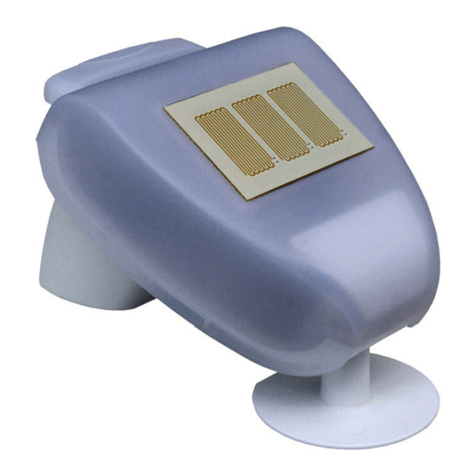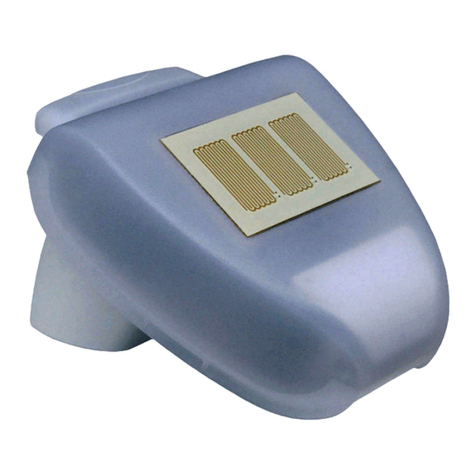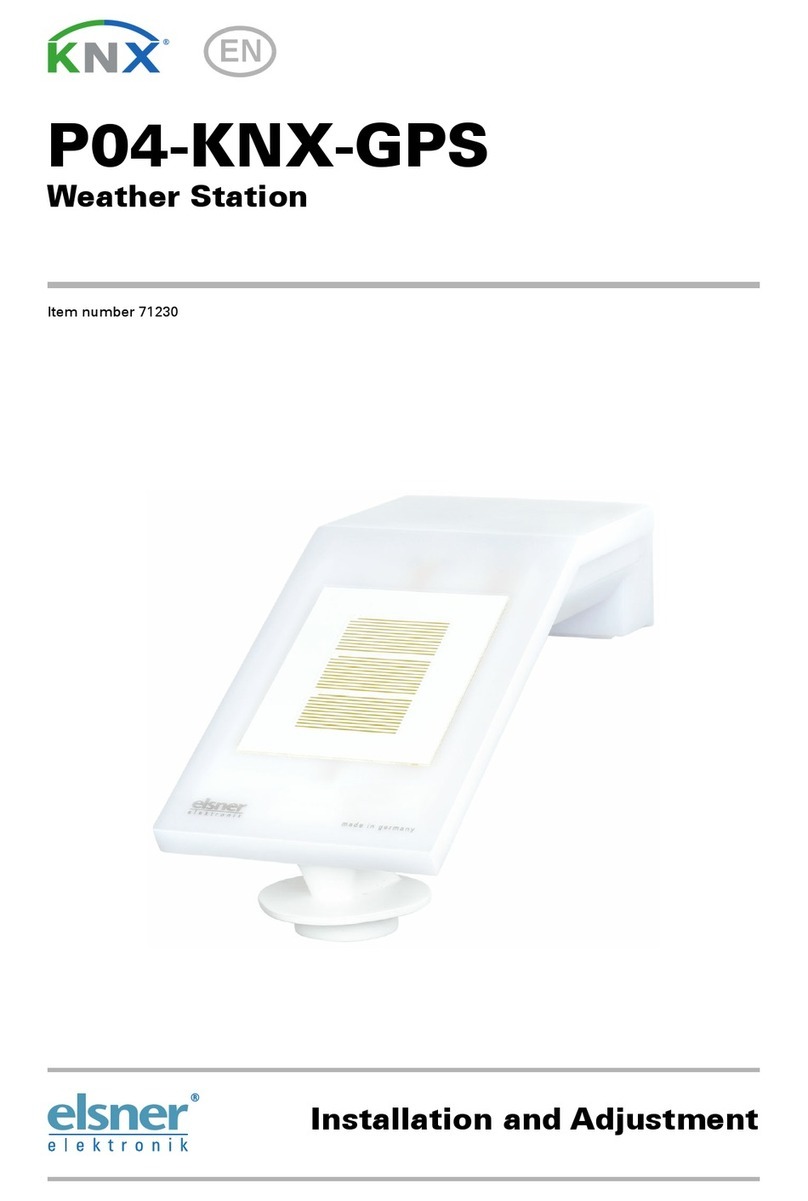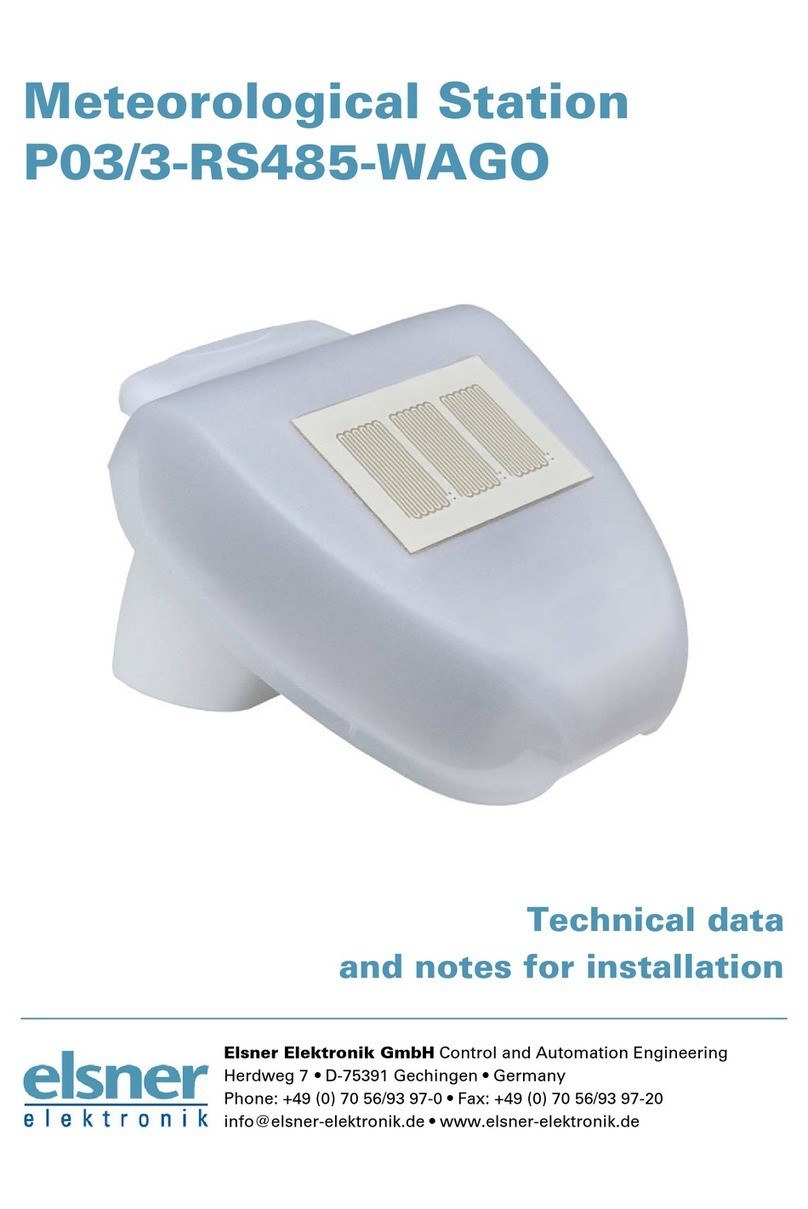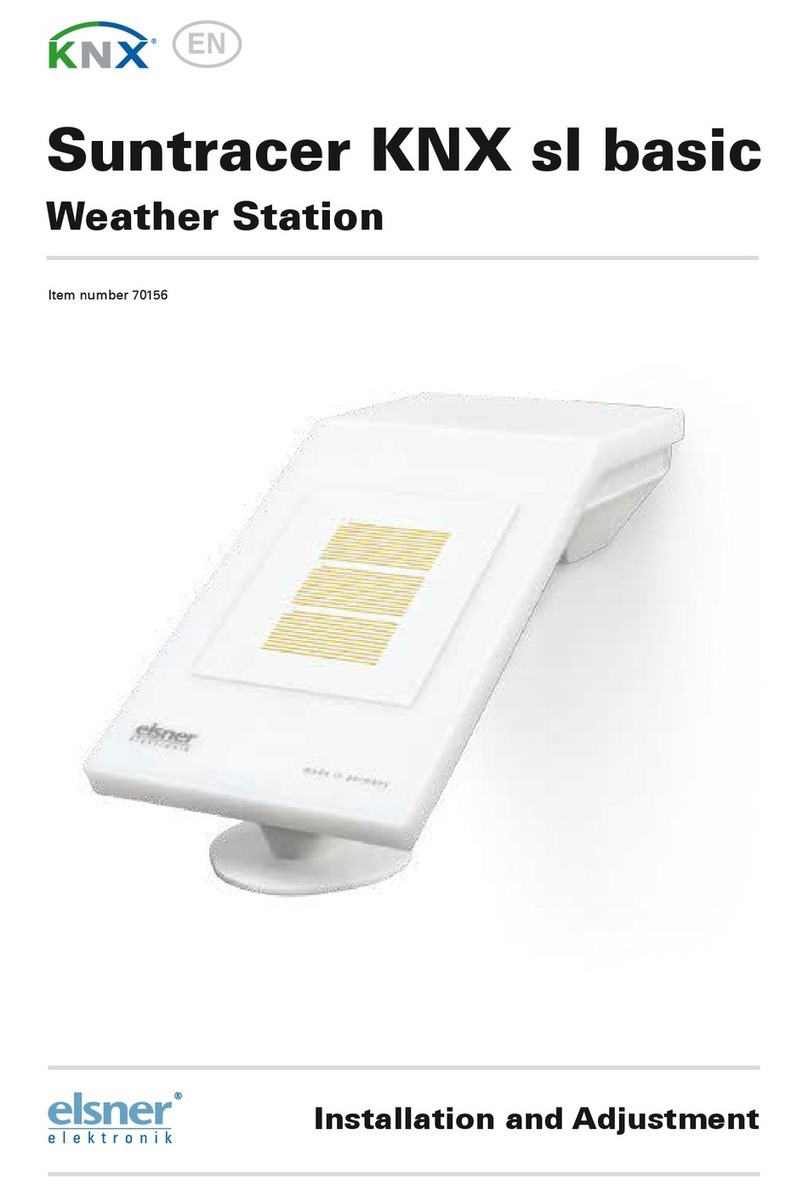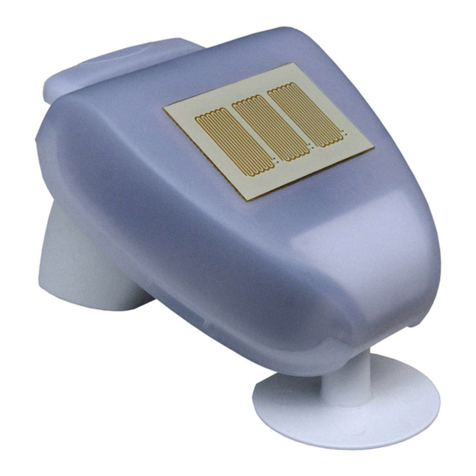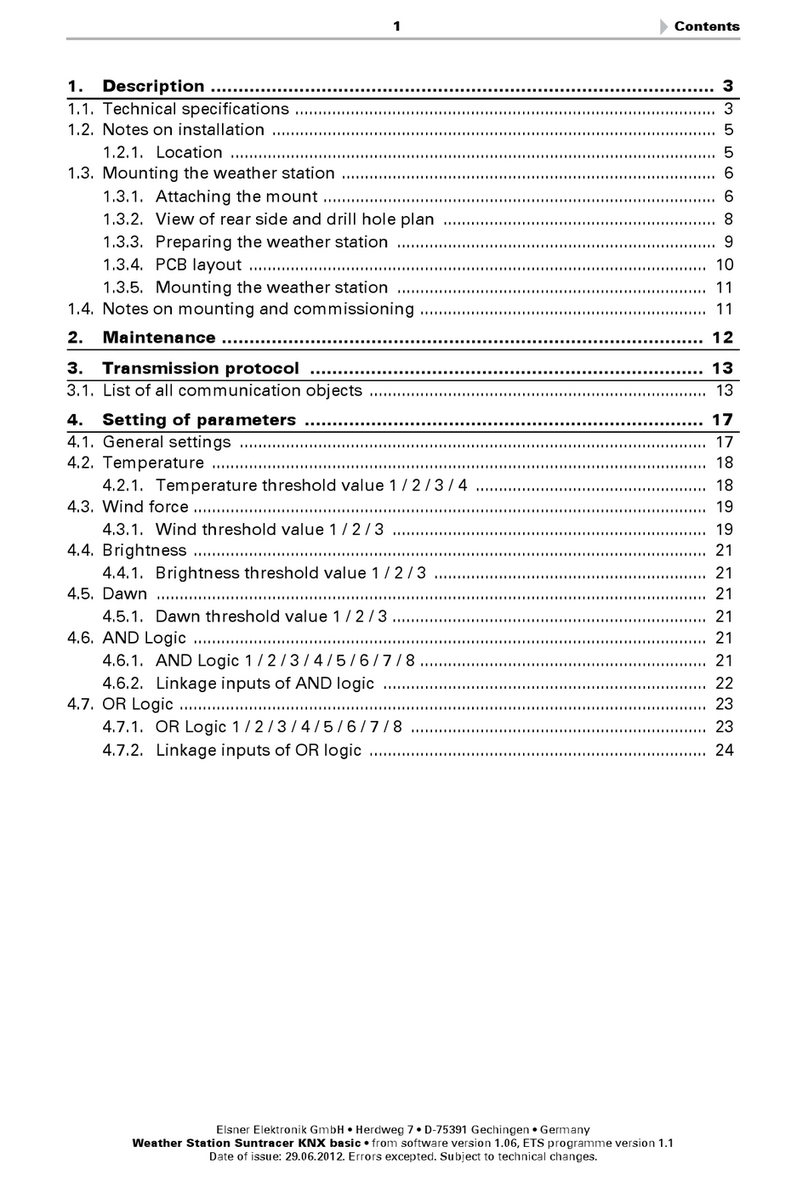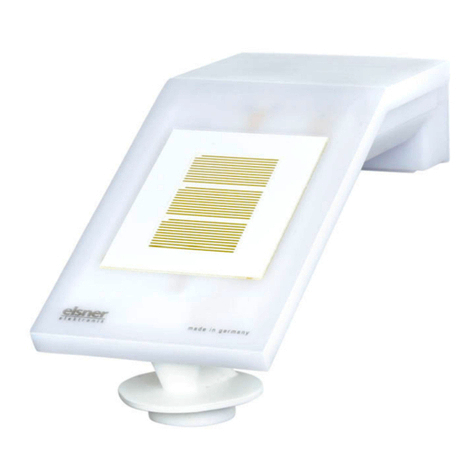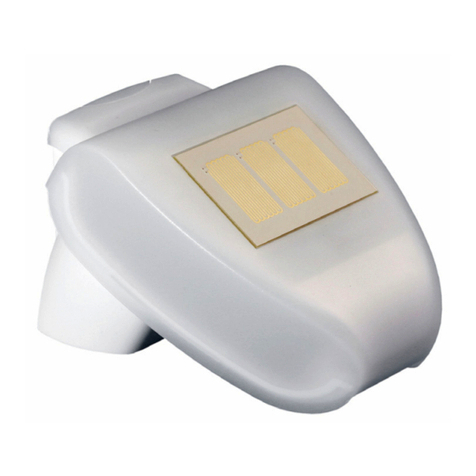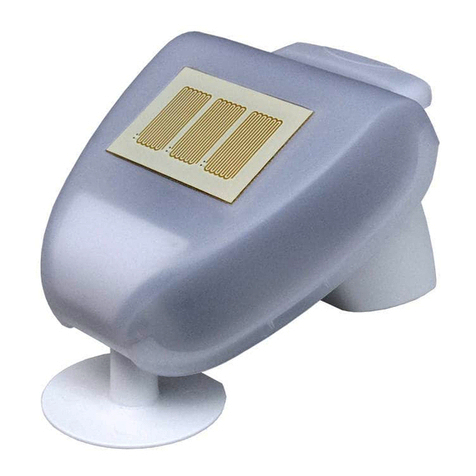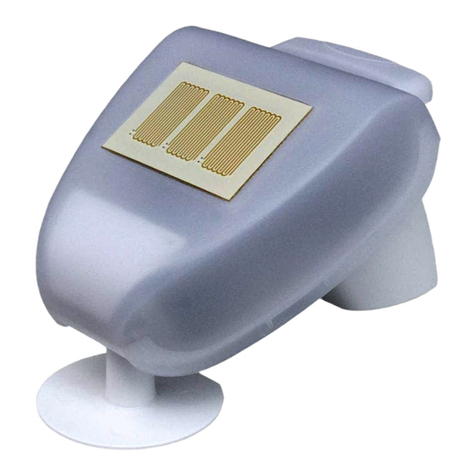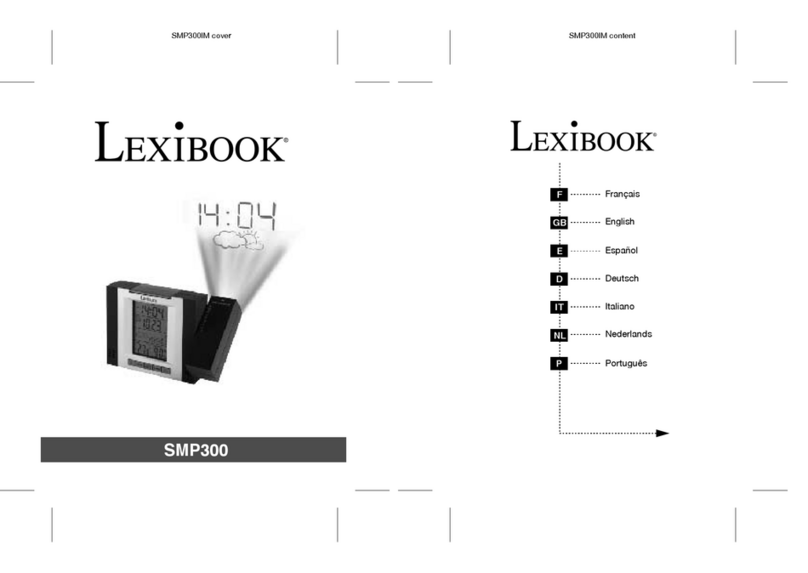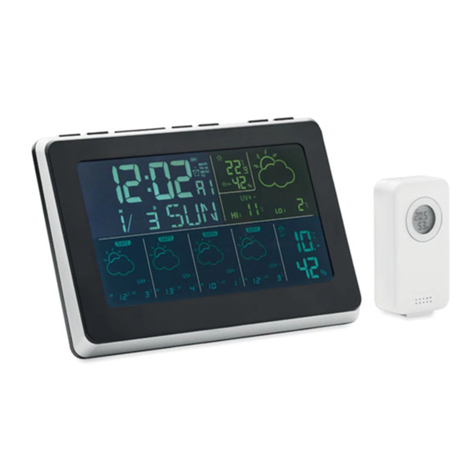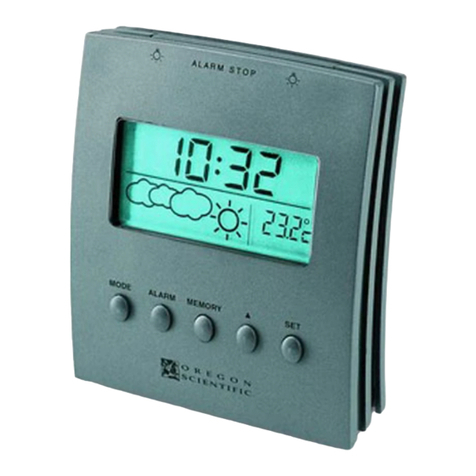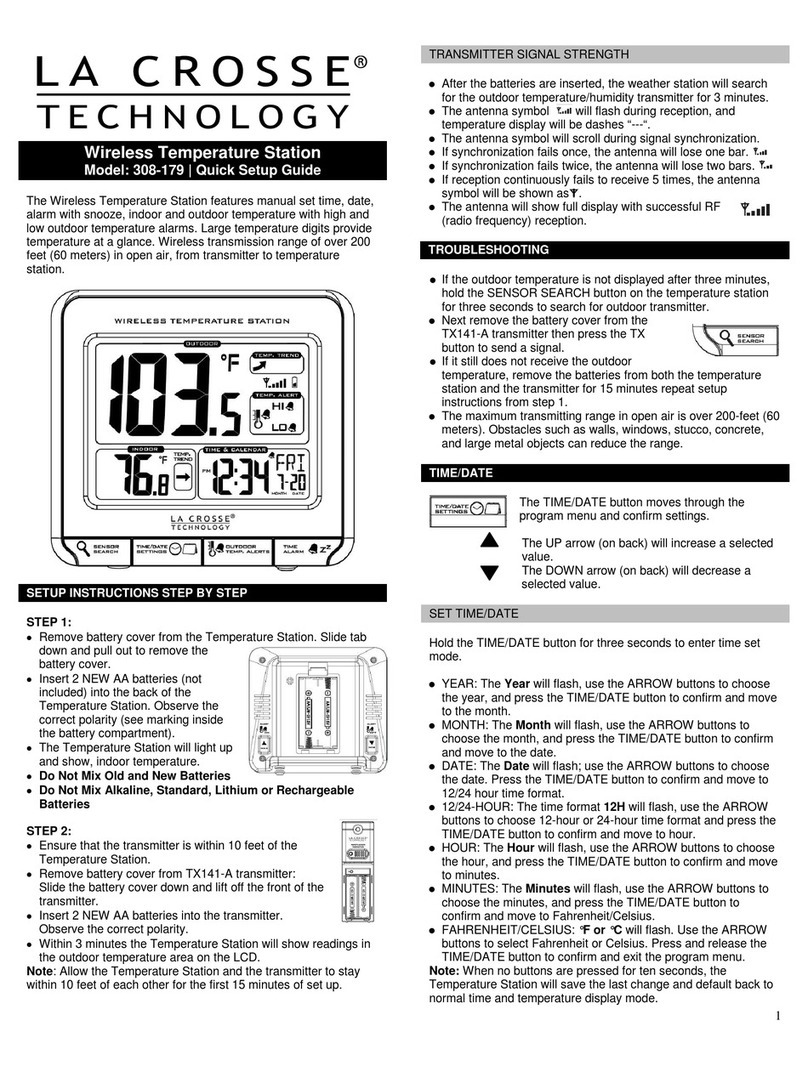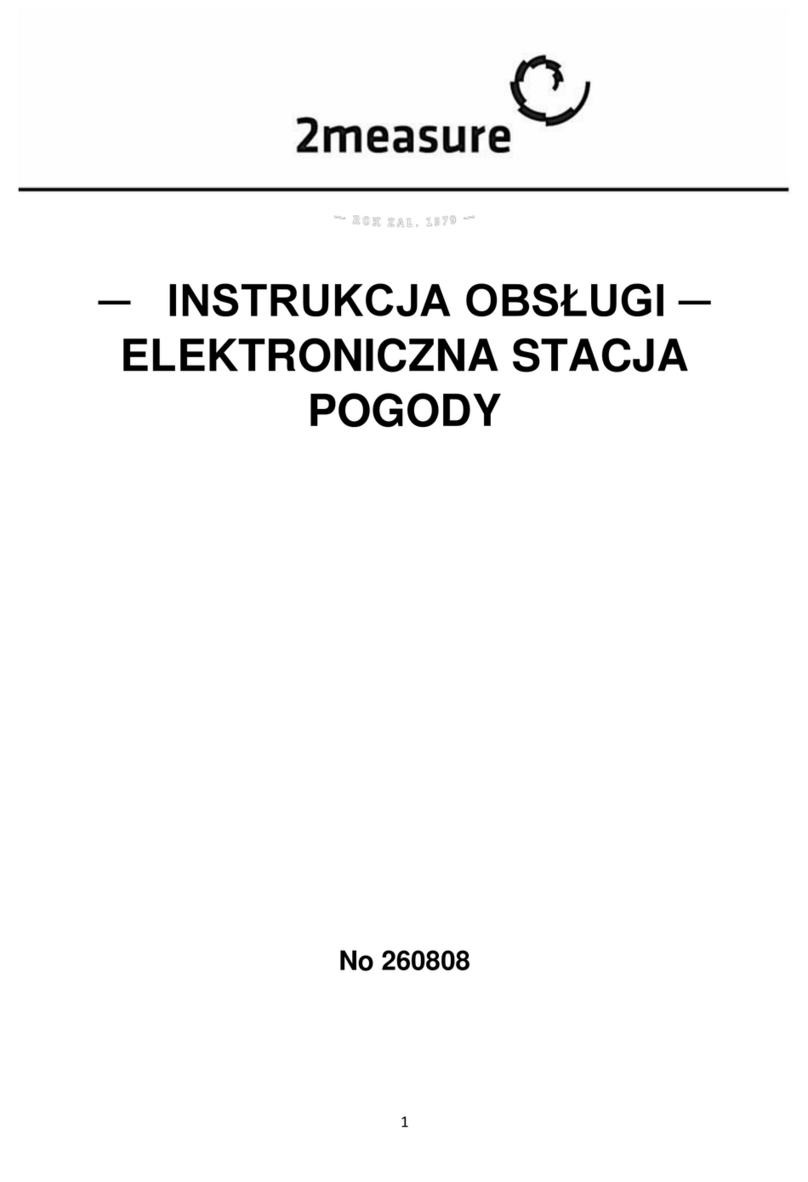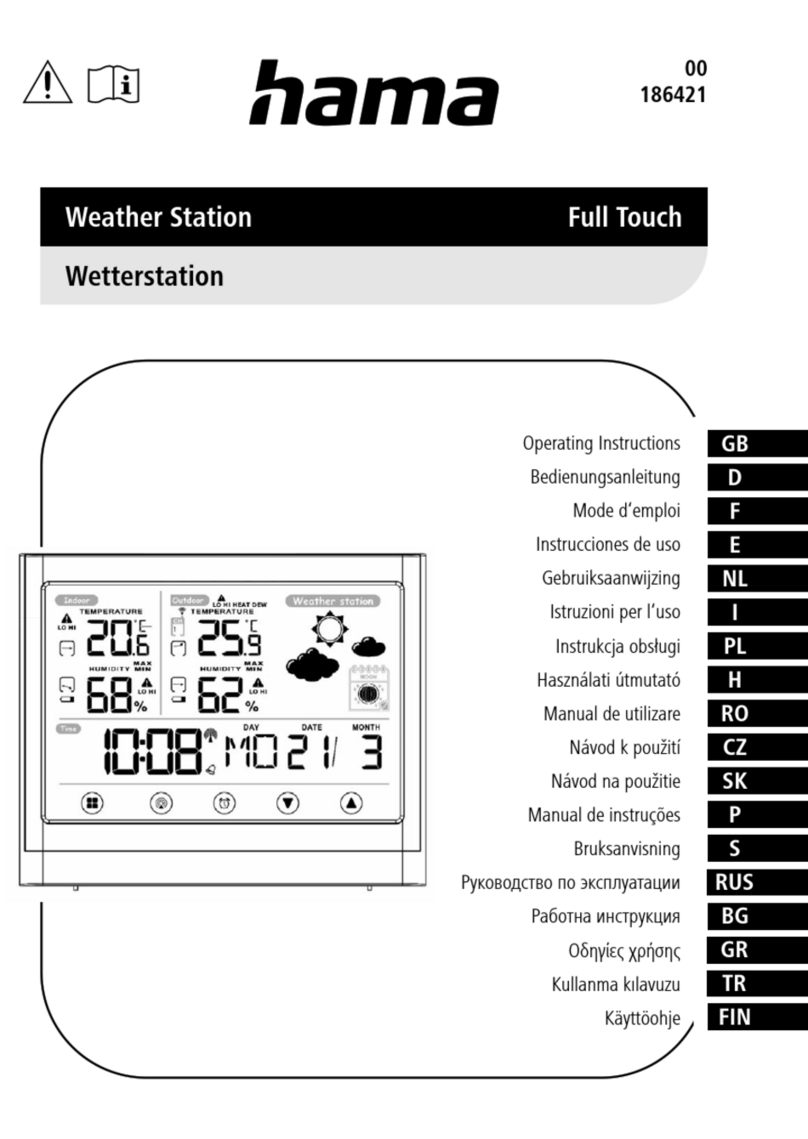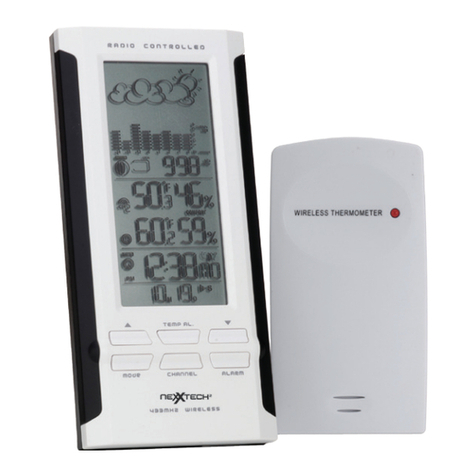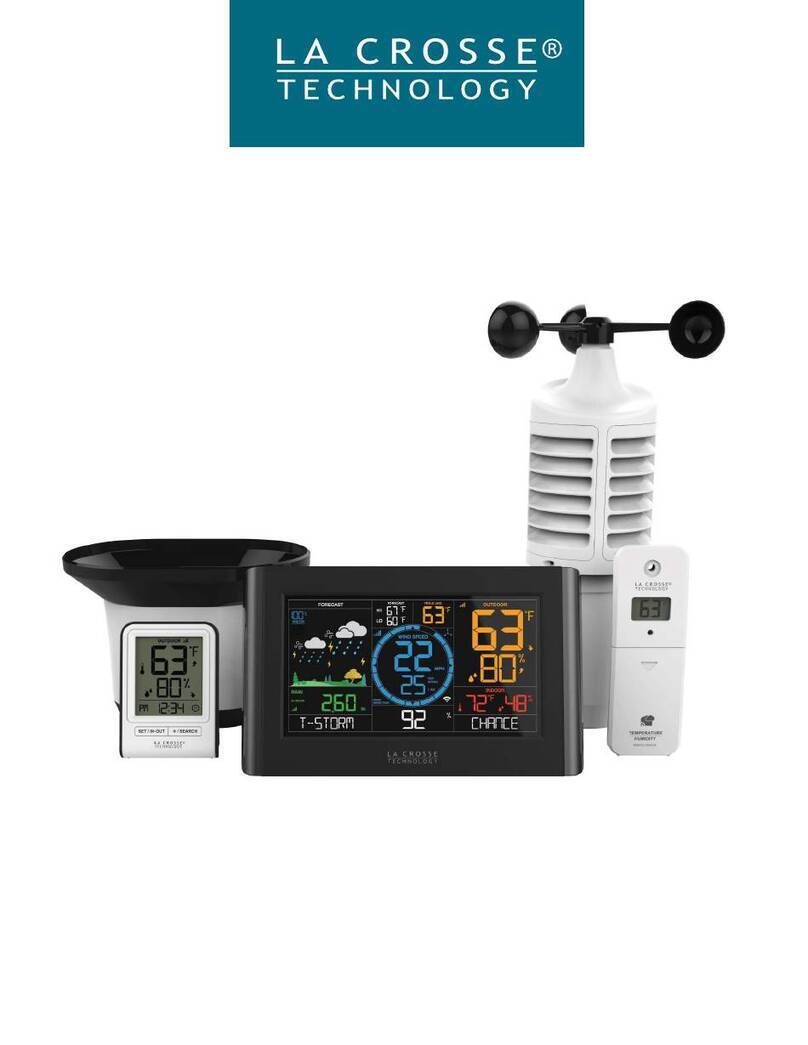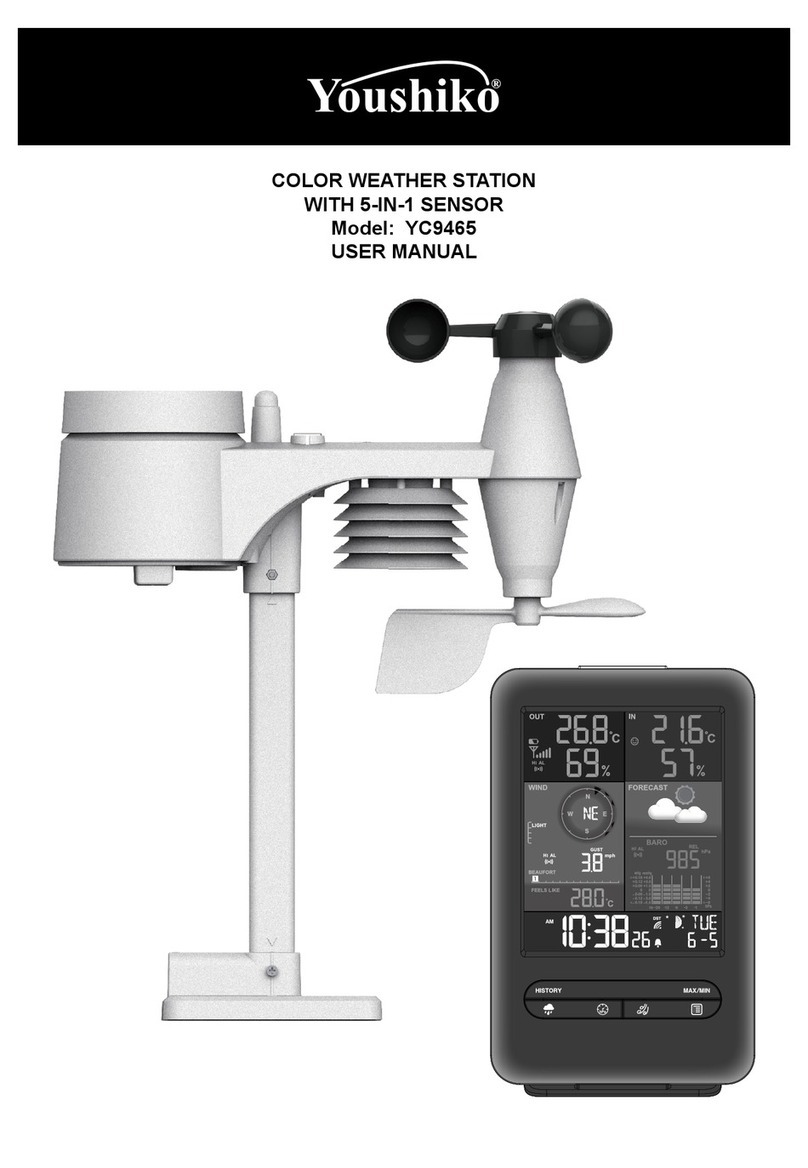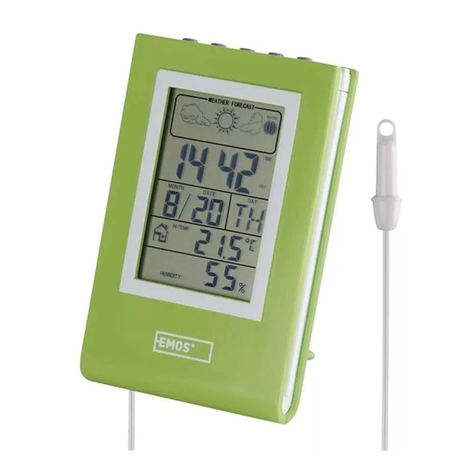
P03/3-RS485 basic Weather Station 1
P03/3-RS485 basic Weather Station • Version: 07.06.2021 • Technical changes and errors excepted. • Elsner Elektronik GmbH • Sohlengrund 16 • 75395 Ostelsheim • Germany • www.elsner-elektronik.de • Technical Service: +49 (0) 7033 / 30945-250
P03/3-RS485 basic
Weather Station
Technical specifications and installation instructions
1. Description
The P03/3-RS485 basic Weather Station measures temperature, wind speed,
brightness (eastern, southern and western sun) and it recognizes precipitation.
The weather station sends the currently recorded weather data once every second.
This data flow can be received and analyzed by an end device such as SPS, PC or
MC.
Functions:
•Brightness measurement with three separate sensors for east, south and
west. Recognition of twilight/dawn
•Wind speed measurement: by means of a nonwearing electronic sensor.
No damage from storm or hail as with mechanical anemometers
• Temperature measurement
• Heated precipitation sensor (1.2 watts): No false reports as a result of fog
or dew. Dries quickly after precipitation has stopped
• Sending cycle for data 1 second
1.0.1. Scope of delivery
• Weather station
1.1. Technical specifications
The product conforms with the provisions of EU directives.
2. Installation and commissioning
Installation, testing, operational start-up and troubleshooting should
only be performed by an authorised electrician.
CAUTION!
Live voltage!
There are unprotected live components inside the device.
• Inspect the device for damage before installation. Only put undamaged
devices into operation.
• Comply with the locally applicable directives, regulations and provisions
for electrical installation.
• Immediately take the device or system out of service and secure it against
unintentional switch-on if risk-free operation is no longer guaranteed.
Use the device exclusively for building automation and observe the operating ins-
tructions. Improper use, modifications to the device or failure to observe the ope-
rating instructions will invalidate any warranty or guarantee claims.
Operate the device only as a fixed-site installation, i.e. only in assembled condition
and after conclusion of all installation and operational start-up tasks, and only in
the surroundings designated for it.
Elsner Elektronik is not liable for any changes in norms and standards which may
occur after publication of these operating instructions.
2.1. Installation position
Choose an installation position in the building where wind, rain and sun can be
measured unhindered by the sensors. The weather station must not be installed
underneath any structural parts from which water can still drip onto the rain sensor
after it has stopped raining or snowing. The weather station must not be shaded
by anything, such as building structures or trees.
At least 60 cm of clearance must be left all round the weather station. This facilita-
tes correct wind speed measurement without eddies. The distance concurrently
prevents spray (raindrops hitting the device) or snow (snow penetration) from im-
pairing the measurement. It also does not allow birds to bite it.
Please take note that an extended awning does not shade the device from sun and
wind.
Temperature measurements can also be affected by external influences such as by
warming or cooling of the building structure on which the sensor is mounted, (sun-
light, heating or cold water pipes).
2.2. Mounting the sensor
2.2.1. Attaching the mount
The sensor comes with a combination wall/pole mount. The mount comes adhered
by adhesive strips to the rear side of the housing. Fasten the mount vertically onto
the wall or pole.
2.2.2. View of rear side and drill hole plan
2.2.3. Connection
The weather station cover with the rain sensor snaps in on the left and right along
the bottom edge (see figure). Remove the weather station cover. Proceed carefully,
so as not to pull off the wire connecting the PCB in the bottom part with the rain
sensor in the cover (wire with push-connector).
Connect the Modbus data line to terminals A and B. Connect the power supply (24
V DC) to terminals 1 and 2. Ensure correct connection!
Push the connecting cable through the rubber seal on the bottom of the weather
station and connect the power and bus cables to the terminals provided for this
purpose.
The connection is by typical telephone cable (J-Y(ST)Y 2 × 2 × 0.8).
Housing Plastic material
Colour White / translucent
Mounting On-wall
Degree of protection IP 44
Dimensions approx. 96 × 77 × 118 (W × H × D, mm)
Weight approx. 160 g
Ambient temperature Operation -30…+50°C, Storage -30…+70°C
Operating voltage 24 V DC ±10%.
A suitable power pack can be purchased from Elsner
Elektronik.
Current max. 120 mA, residual ripple 10%
Data output RS485
Heating rain sensor approx. 1.2 W
Measurement range
temperature
-40…+80°C
Resolution (temperature) 0.1°C
Accuracy (temperature) ±1.5°C at -25…+80°C
Measurement range wind 0…35 m/s
Resolution (wind) 0,1 m/s
Accuracy (wind) at ambient temperature -20…+50°C:
±22% of the measurement value when incident flow
is from 45…315°
±15% of the measurement value when incident flow
is from 90…270°
(Frontal incident flow corresponds to 180°)
Measurement range
brightness
0 … 99,000 lux
Resolution (brightness) 1 lux up to 300 lux
2 lux up to 1,000 lux
20 lux up to 99,000 lux
Accuracy (brightness) ±15% at 30 lux … 30,000 lux
Fig. 1
There must be at least 60 cm of space
below, to the sides and in front of the
weather station left from other ele-
ments (structures, construction parts,
etc.).
60 cm
Fig. 2
The weather station must be mounted
on a vertical wall (or a pole).
Wall
or
pole
Fig. 3
The weather station must be mounted
in the horizontal transverse direction
(horizontally).
Horizontal
Fig. 4
For installation in the northern hemis-
phere, the weather station must be
aligned to face south.
For installation in the southern hemis-
phere, the weather station must be
aligned to face north.
North
South
Fig. 5
When wall mounting: flat side on wall,
crescent-shaped collar upward.
Collar
Fig. 6
When pole mounting: curved side on po-
le, collar downward.
Collar
Fig. 7
Different mounting arms are available
from Elsner Elektronik as additional, op-
tional accessories for flexible installation
of the weather station on a wall, pole or
beam (pictures of sensors exemplary).
Example of the use of a mounting arm:
Due to flexible ball joints, the sensor can
be brought into ideal position.
Fig. 8
Example use of the hinge arm mounting:
With the hinge arm mounting, the weat-
her station projects from beneath the
roof overhang. Sun, wind and precipita-
tion can act upon the sensors without
hindrance.
Fig. 9
Example use of the hinge arm mounting:
Fitting to a pole with worm drive hose
clips
Langloch 7,5 x 5 mm
Fig. 10 a+b
Drill hole plan
Dimensions of rear side of housing with bra-
cket. Subject to change for technical enhan-
cement.
Fig. 11
1) Cover Snaps
2 Bottom part of housing
1
2
Unsnap cover and
remove upwards
EN





